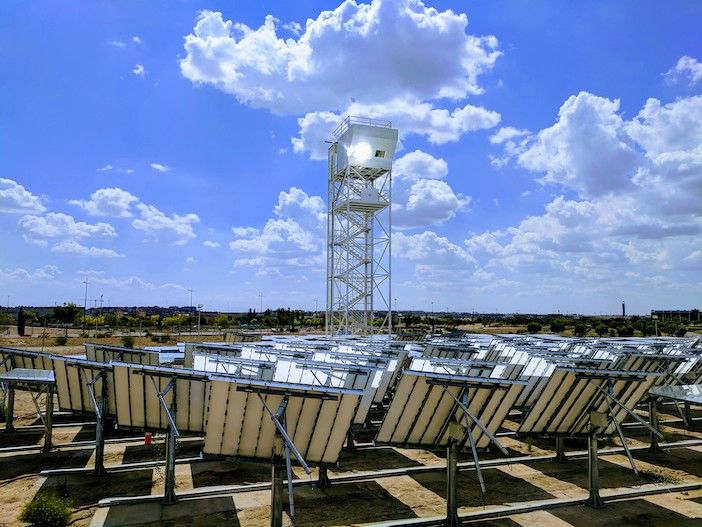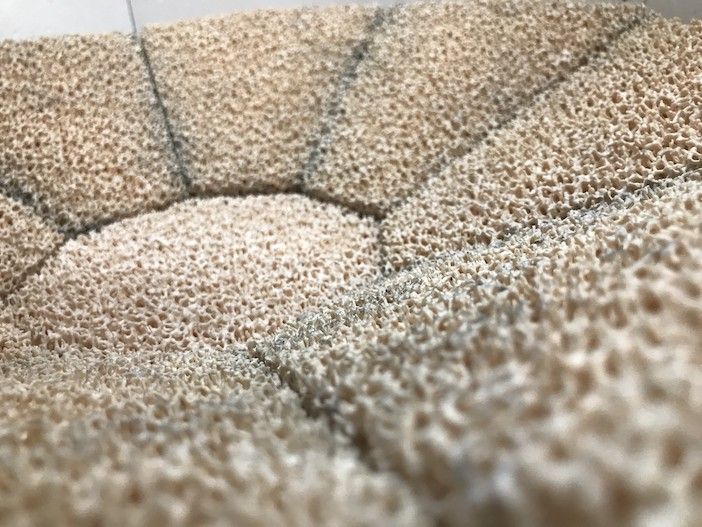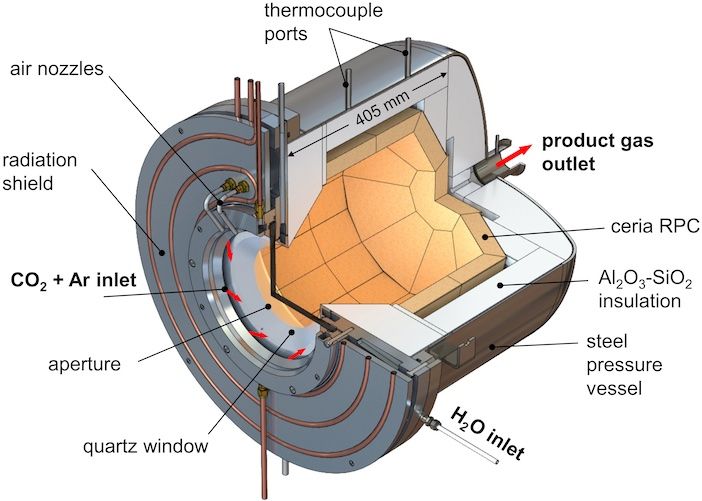Aldo Steinfeld is a professor of mechanical engineering at ETH Zurich in Switzerland. He obtained his PhD degree at the University of Minnesota in 1989. His thesis advisor Edward Fletcher was a chemist and introduced him to the field of solar fuels.
More than thirty years later he and his research group at ETH Zurich have developed solar technology capable of producing synthetic kerosene from water and carbon dioxide, instead of deriving it from fossil fuels. The entire thermochemical process chain was demonstrated in a solar tower fuel plant as part of an EU research project called Sun-to-Liquid.
“Solar kerosene can contribute to making aviation more sustainable. The amount of carbon dioxide released during its combustion in a jet engine equals that consumed during its production in the solar fuel plant,” said Steinfeld. “This makes solar kerosene carbon neutral, especially if carbon dioxide is captured directly from ambient air.”

The solar tower fuel plant has been built at the IMDEA Energy Institute in Spain. The plant consists of 169 sun-tracking reflective panels that redirect and concentrate solar radiation into a solar reactor mounted on top of a tower. The concentrated solar energy drives reduction-oxidation reaction cycles in the solar reactor, which contains a porous structure made of ceria.

The ceria converts water and carbon dioxide injected into the reactor into syngas, a tailored mixture of hydrogen and carbon monoxide. The solar syngas is then sent into a gas-to-liquid converter located on the base of the tower, where it is finally processed into liquid hydrocarbon fuels including kerosene
and diesel.
The pilot plant is being used for research purposes but is fully-integrated and uses a configuration suitable for industrial implementation. Steinfeld’s research group is working intensively on optimizing the solar reactor for increasing the solar-to-fuel energy conversion efficiency. They are applying 3D-printed hierarchically ordered structures to improve volumetric radiative absorption, which in turn leads to higher energy efficiency. In addition, they are looking at alternative material compositions such as perovskites or aluminates, which may yield improved redox capacity, and consequently higher specific fuel output per mass of redox material.


Around 5% of current anthropogenic emissions causing climate change are attributed to global aviation and this number is expected to increase. Kerosene will be indispensable as a jet fuel for long-haul aviation for the foreseeable future because of its high specific gravimetric energy density and compatibility with existing infrastructure. The solar technology has the potential to solve aviation’s problem of emissions by substituting fossil-derived kerosene for solar-made kerosene. Solar kerosene is compatible with existing infrastructures for fuel storage, distribution and end-use in jet engines, and can be blended with fossil-derived kerosene.
The prospect of an industrial implementation of the technology soon is looking favorable. Synhelion, a spinoff from Steinfeld’s laboratory plans to commission the world’s first industrial solar tower fuel plant next year, and SWISS has said it will be the world’s first airline to use the solar kerosene from it. Research is continuing at ETH Zurich in partnership with other laboratories, while Synhelion brings forward the industrial implementation and commercialization of the technology.





